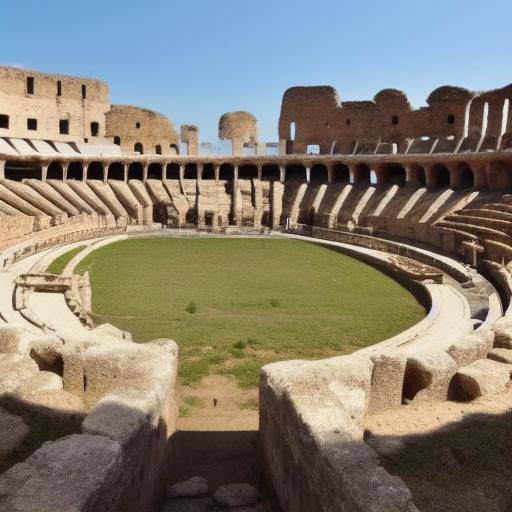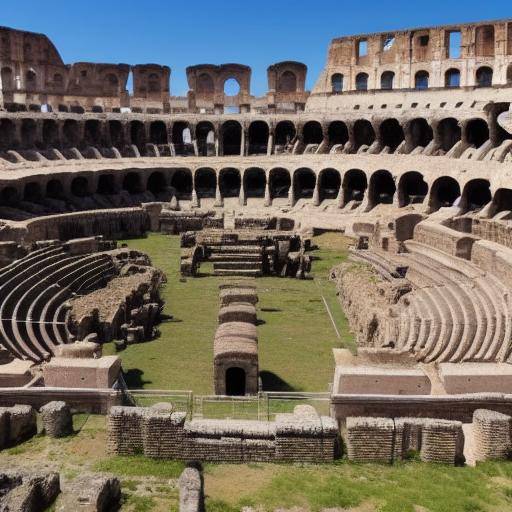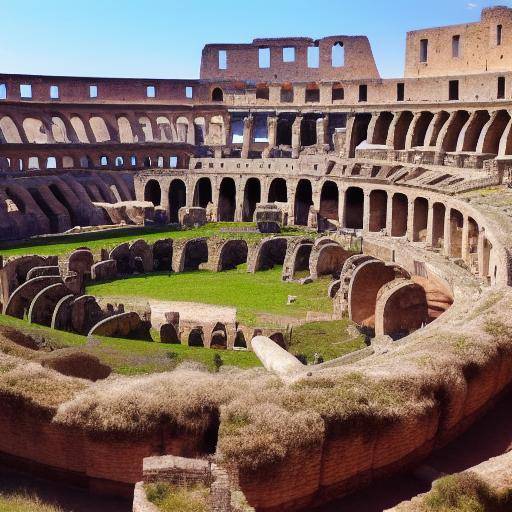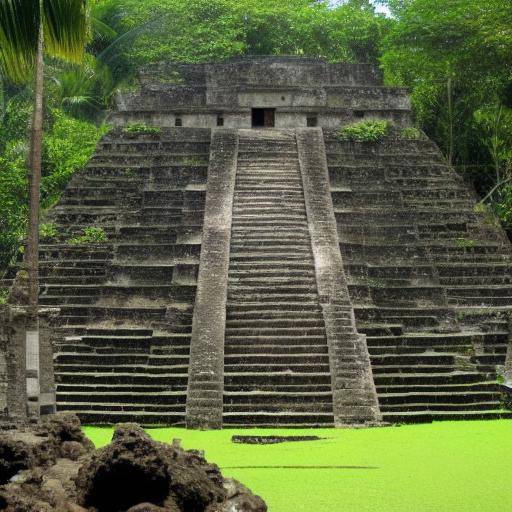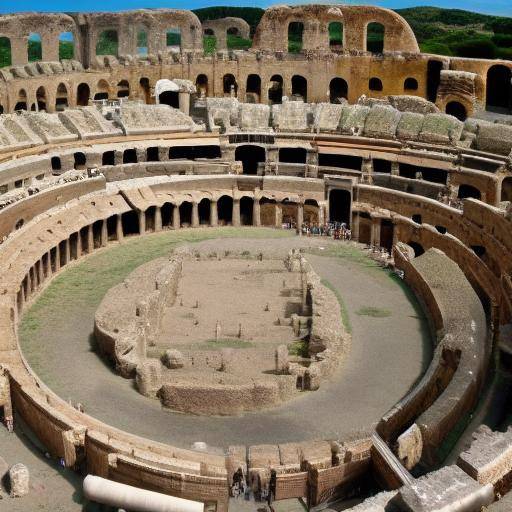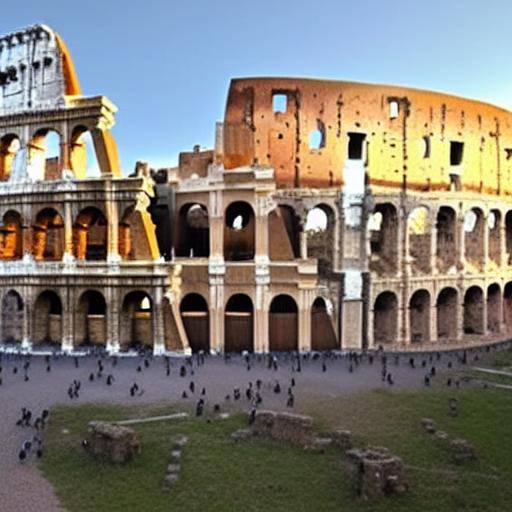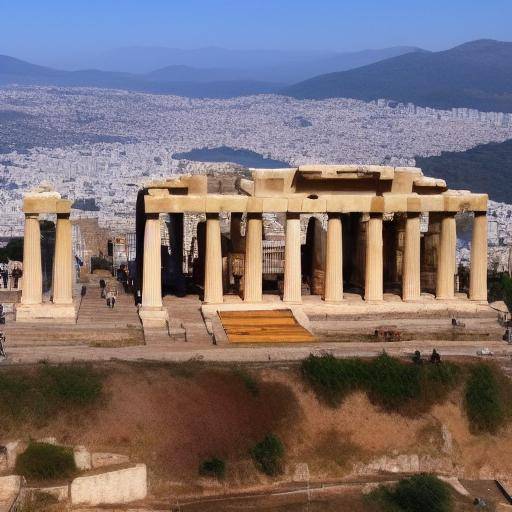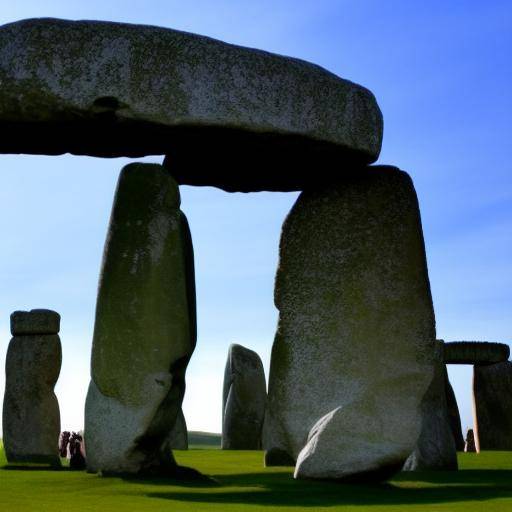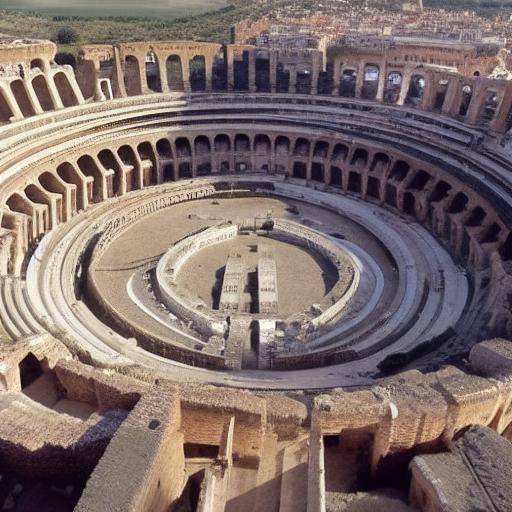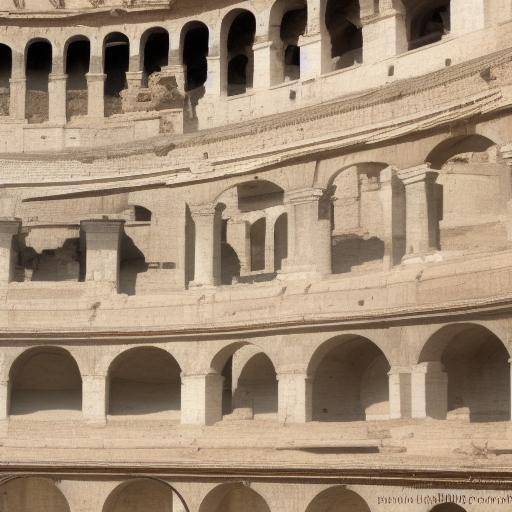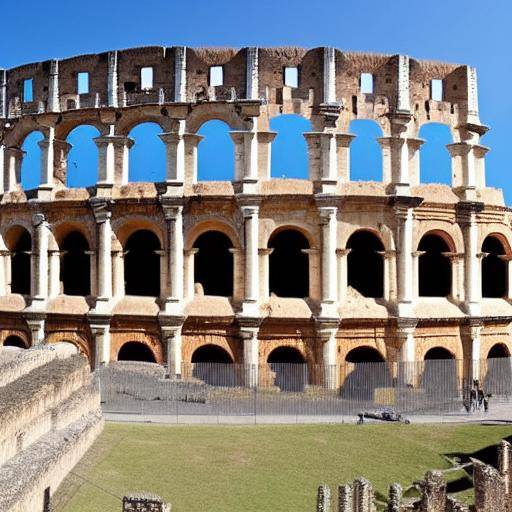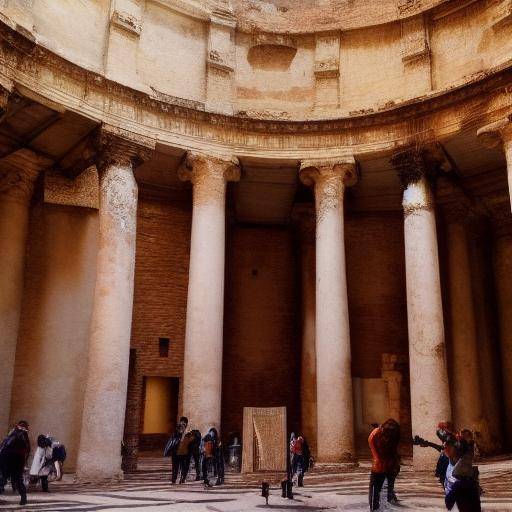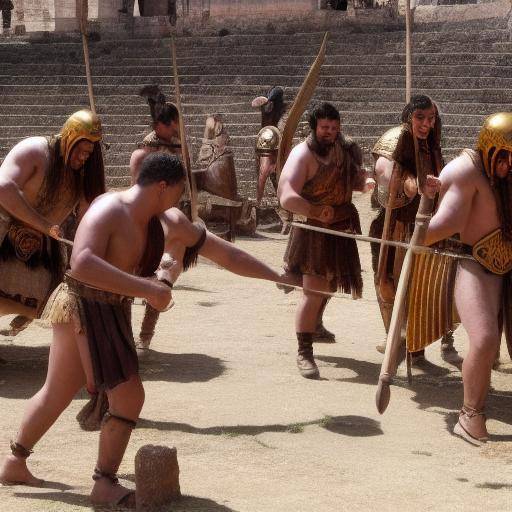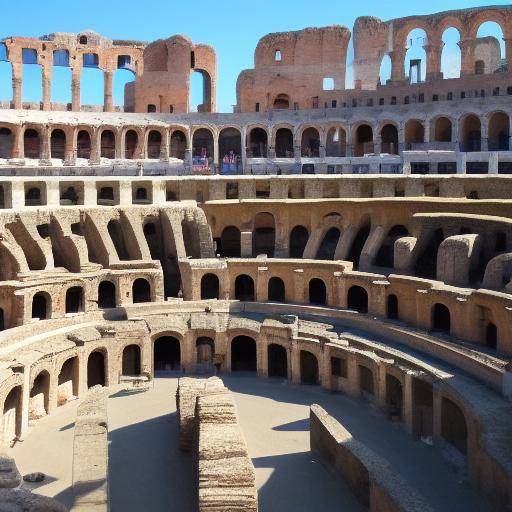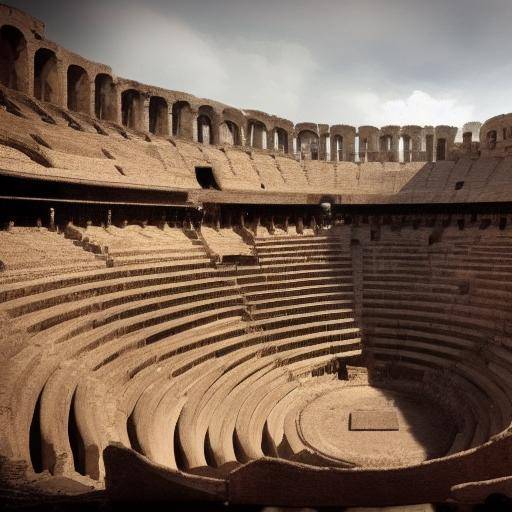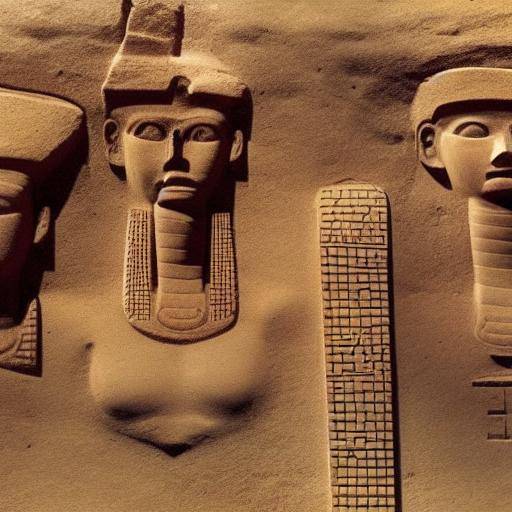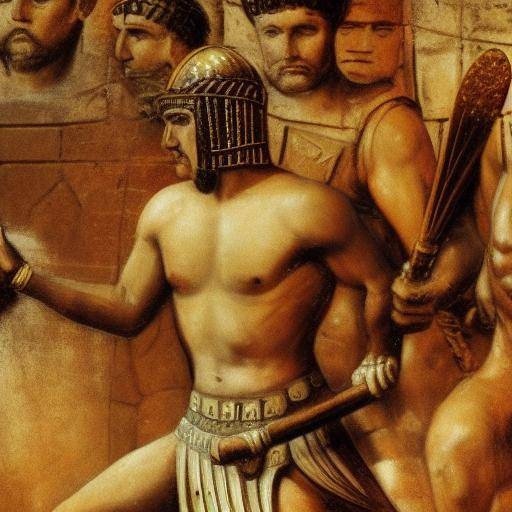
The Roman Colosseum, or Colosseum, is an eternal icon of the greatness and majesty of the Roman Empire. This historical monument is not only a testimony to the formidable architecture of ancient Rome, but also houses centuries of fascinating stories about life in the ancient city. In this comprehensive guide, you will discover the treasures of the Roman Colosseum, the history of gladiators and all the wealth that this iconic place has to offer.
Introduction
The Roman Colosseum, also known as the Flavio Amphitheater, is one of the oldest structures in the world and one of the main attractions of the city of Rome. Built in the 1st century under the command of the Flavio emperors, the Colosseum was the stage of epic shows that have left a profound mark on Western history and culture. From gladiator battles to recreations of famous battles, the Colosseum has witnessed countless exciting events over the centuries. This article will guide you through the history, secrets and treasures of the Roman Colosseum, including the fascinating history of gladiators who made it an eternal legend.
History and Background
The Roman Colosseum stands as an imposing monument that embodies the greatness of the Roman Empire. Built in the 1st century AD under the command of the Flavio emperors, this majestic amphitheater was used to host public shows such as gladiator battles, wild beast hunts, public executions, recreations of famous battles and plays. Its capacity to host between 50,000 and 80,000 spectators makes it a colossus of antiquity entertainment. However, after centuries of use, its magnificence witnessed the decline of the empire and was affected by earthquakes and looting, although it has remained a lasting symbol of antiquity until today.
Historical and Evolution Importance
The Colosseum was not only the epicenter of entertainment and culture in ancient Rome, but also symbolizes the power and magnificence of the empire. Its construction represented a milestone in the engineering and architecture of the time, using advanced techniques that allowed the Romans to create an unprecedented structure in terms of scale and functionality. Throughout its history, the Colosseum has witnessed countless significant events that have left a profound mark on the development of Roman society and its lasting legacy in modern history.
Analysis of the Fund
To understand the magnitude of the influence of the Roman Colosseum in ancient society, it is vital to analyze in detail the events and practices that took place within this majestic construction. From the exciting story of gladiators to the insidious politics of entertainment that was carried out, every aspect of life in the Colosseum is loaded with historical and cultural significance.
The History of the Gladiators
The gladiators were a fundamental part of Roman culture and society, and their intrepid participation in the bloody battles of the Colosseum made them legendary figures in the ancient world. These brave fighters were slaves, prisoners of war or convicted criminals who fought to death at the Colosseum for the entertainment of the masses. However, behind the brutality of their battles, a complex network of honor, sacrifice and determination was hidden that made them icons of courage in Roman society. To explore the history of gladiators is to enter a world full of intense emotions, epic challenges and the constant struggle for survival in an extremely hostile environment. This section will examine its origins, training, roles in Roman society and lasting legacy in history.
Comprehensive review
To fully appreciate the greatness of the Roman Colosseum and the history of gladiators, it is essential to conduct a thorough analysis of the events, practices and historical significance that have defined this emblematic monument and those who inhabited it.
Gladiators: Challenges and Triomphs
The life of gladiators was full of extreme challenges and tests that tested their resistance, fighting skills and courage. From their training in gladiator schools to their confrontation on the arid soil of the Colosseum, these warriors suffered a road full of dangers, but they also obtained the ephemeral glory that only the fight in the sand could offer. Exploring their exploits in combat, their survival strategies and their impact on Roman society offers a fascinating vision of life in ancient Rome.
Comparative analysis
In this section, a comparative analysis will be carried out between the Colosseum, the history of Rome and antiquity. Similarities, differences and possible synergies between these elements will be identified to present an integral perspective of their historical and cultural significance.
Colosseum vs. Rome: Legacy and Meaning
The Roman Colosseum, as an emblematic monument of ancient Rome, encapsulates the greatness and complexity of a powerful civilization. By comparing the influence of the Colosseum with the historical legacy of Rome, the interconnection between architecture, society and culture in ancient times is revealed. In addition, the relationship between the history of the Colosseum and that of antiquity provides a profound view of the evolution and the transformations that took place in the historical panorama of the region.
Practical Tips and Accessible Recommendations
For history enthusiasts and those who wish to explore the treasures of the Roman Colosseum and the life of gladiators, this section offers practical advice and actionable recommendations for an enriching and memorable experience.
Experiential Tour: Discovering the Colosseum
When visiting the Colosseum, it is advisable to obtain a tourist guide that offers a deep perspective of history, fascinating facts and architectural details of this unique monument. In addition, scheduling the visit to witness historical reconstructions or spectacles that commemorate the time of gladiators will provide a deeper understanding of life in ancient Rome.
Conclusions and FAQs
Conclusions
The Roman Colosseum is much more than a simple architectural structure; it is a lasting testament to the splendor and grandeur of ancient Rome. The story of gladiators, woven on the walls of this monument, offers a unique window to the courage, brutality and complexity of society in those times. By exploring the treasures of the Colosseum and the heritage of gladiators, we immerse ourselves in an incomparable historical legacy that continues to fascinate the modern world.
Frequently asked questions
1. What was the purpose of the Roman Colosseum?
The Roman Colosseum was built to host public shows, such as gladiator battles, wildfire, public executions and theatrical works, in order to entertain and keep the population under control.
2. What was the role of gladiators in Roman society?
The gladiators were trained fighters who participated in battles to death in the Colosseum as a form of entertainment. Although they were considered socially inferior, their courage in the sand gave them the respect and admiration of the public.
3. How long did the gladiator era last at the Roman Colosseum?
The era of gladiators in the Roman Colosseum encompassed approximately from the third century BC to the fifth century AD, being a significant period in the history of Roman society.
4. How were gladiators selected and trained?
The gladiators generally came from marginalized sectors of society, such as prisoners of war, slaves or criminals. They were trained in gladiator schools where they learned combat techniques, survival strategies and developed physical skills.
5. What kind of weapons did gladiators use in battles?
The gladiators used a variety of weapons, including swords, spears, tridents, nets and shields, depending on their fighting style. Each type of gladiator was specialized in handling a specific set of weapons.
6. How were the shows financed in the Roman Colosseum?
The shows at the Roman Colosseum were financed by emperors, aristocrats and private sponsors, who sought to gain the favor of the public and maintain their political influence through public entertainment.
It concludes your journey by exploring the treasures of the Roman Colosseum and delving into the exciting story of gladiators, weaving a vivid and captivating tapestry of ancient Rome that continues to intrigue generations. In this epic monument, the greatness and drama of history collide in an unforgettable saga that continues to inspire and astonish the world.

